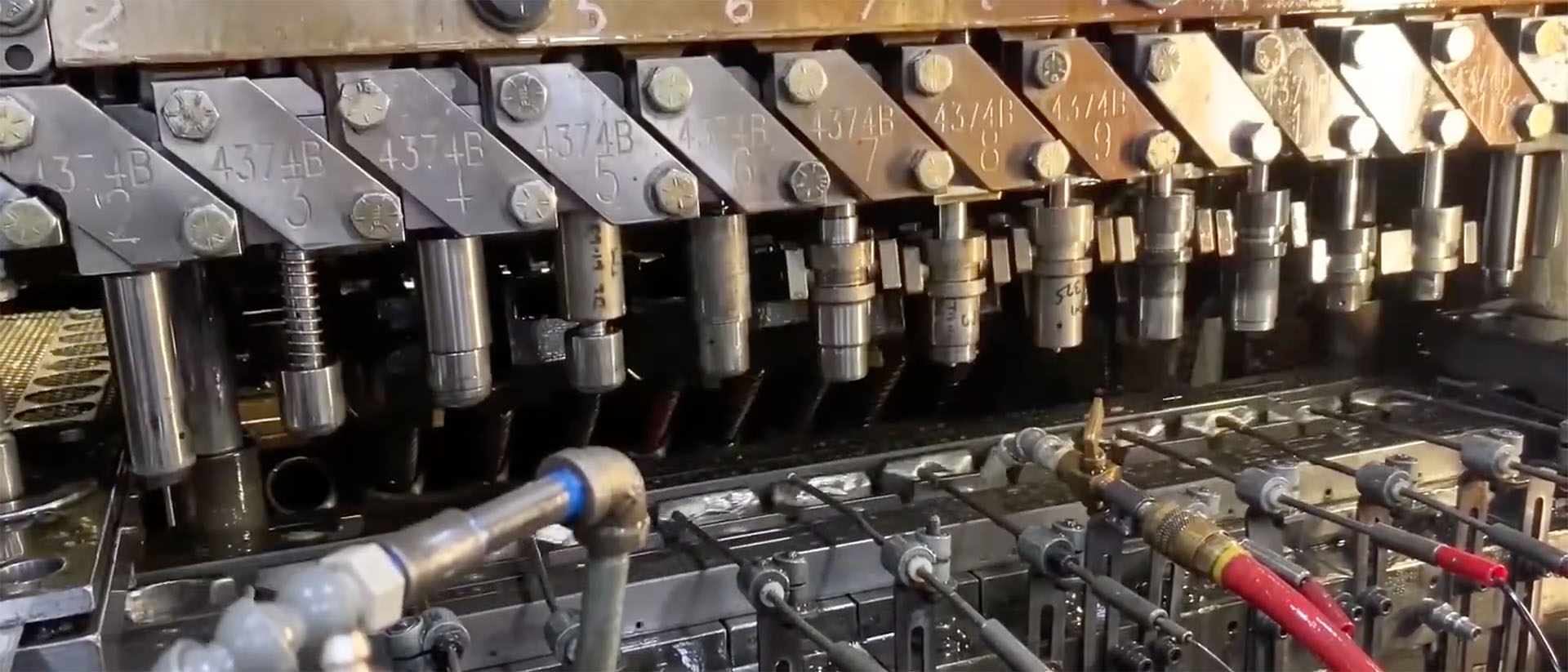Transfer Press Stamping
Transfer press stamping has evolved to meet the growing demand for high-volume, intricate metal components. With single-stroke stamping, complex components can be expensive and labor-intensive, requiring technicians to manually reposition parts at multiple presses. Instead, transfer press stamping automates multiple operations, making it easier for our metal stamping company to create detailed parts. Today transfer press components make up auto parts, light fixtures, HVAC systems, aerospace products, and more.
Learn more about how this form of precision metal stamping works.

Transfer Press Types
Trans-Matic is equipped with 119 transfer presses whose tonnage ranges from 5 to 600 tons. This range allows us to select the ideal press for components of different sizes and shapes.
Our presses consist of Individual Cam Operated Plungers (ICOP) and Solid Bed “Die Set” models. Both types of press enable fast and reliable production at low operating costs.
- Individual Cam Operated Plungers (ICOP): A single ICOP acts like multiple presses in one. Each station moves independently from the others, but the integrated transfer mechanism synchronizes their individual operations. This press enables easy customization throughout each production run.
- Solid Bed “Die Set” Press: Like an ICOP, a solid bed press features independent but synchronized press stations. Instead of using a rotary mechanism, a solid bed press has a flat surface that initiates the press motion and activates multiple stations simultaneously.
What Is the Transfer Press Stamping Process?
Transfer die stamping is an efficient manufacturing process used to craft medium to high volumes of metal components. Like other stamping presses, transfer presses shape workpieces by forcing them into dies under extreme pressure. The workpiece progresses through multiple pressing stations, each of which alters the component further.
Traditional methods would require employees to move pieces by hand from one press to the next, but modern transfer presses use automated mechanical transport systems to transfer and reposition components. This automated transport mechanism makes transfer press stamping highly efficient and economical.
The transfer press stamping process involves a single press operating the full system of tools, which can consist of one die or multiple dies arranged in a production line. A single cycle of the press alters multiple workpieces simultaneously, each at a different stage of the manufacturing process. It all begins with a raw strip of material, which is pressed into blanks at the first station. Every time the press opens, mechanical fingers automatically move the workpiece to the next press. Each blank moves through a series of stations that form the rough shape, then refine dimensions, features, and forms.
Possible in-station processes include:
Transfer Presses vs. Progressive Die Presses
Using multiple stations is not unique to transfer press stamping. Progressive die pressing also enables sequential operations on multiple workpieces simultaneously. However, in progressive stamping, all workpieces remain attached to a single strip, which limits part size and complexity. Transfer press stamping allows separate components to move between stamping stations, which work on the pieces in a free state. The key difference between the two processes is the workpiece’s movement through the machine though both are highly efficient for particular applications.
Notable Features of Each Stamping Process
In transfer press stamping, a single press operates multiple stamping stations at once. The first station forms individual blanks, which are transferred and repositioned freely between stations. Automated mechanical transfer mechanisms move the workpieces, streamlining complex operations into a single process.
In progressive die stamping, a metal workpiece is fed through the machine, which performs one or more stamping operations at each station until the part is complete. A metal coil advances multiple workpieces through the workstations as one, until the final station separates the individual workpieces. Progressive die stamping tools feature more complex geometries and result in quicker production.
Benefits of Each Stamping Process
Compared to progressive die stamping, transfer press stamping is more cost-effective and versatile, especially for short production runs. It is also ideal for producing large parts with specialized features. Since workpieces are separate from the raw coil, transfer press stamping can shape individual components completely over the course of one stamping cycle, eliminating the need for additional processing.
Comparatively, progressive die stamping is generally quick to set up and cost-effective for long production runs. The process is highly efficient and repeatable, creating consistent components with tight tolerances. It also generates less material waste. For these reasons, progressive die stamping is best for productions requiring high volumes in a short period of time.
Takeaway Advantages to Remember
Transfer press stamping is the ideal manufacturing technique for stamped metal parts with length-to-diameter ratios of 1:1 or greater. A summary of the key benefits includes:
- Best for producing large components
- Broad setup flexibility
- Cost-effective for short, mass production runs
- Low tooling costs
- Simple operation
Explore Our Transfer Press Stamping Capabilities
Trans-Matic is a global transfer press stamping company with decades of experience perfecting our processes. The result is a state-of-the-art transfer press facility built to accommodate diverse project requirements. We match each project with the ideal manufacturing process to maximize product quality and minimize cost. Fill out our online contact form today to schedule a consultation and learn more about how our services can benefit your business.


